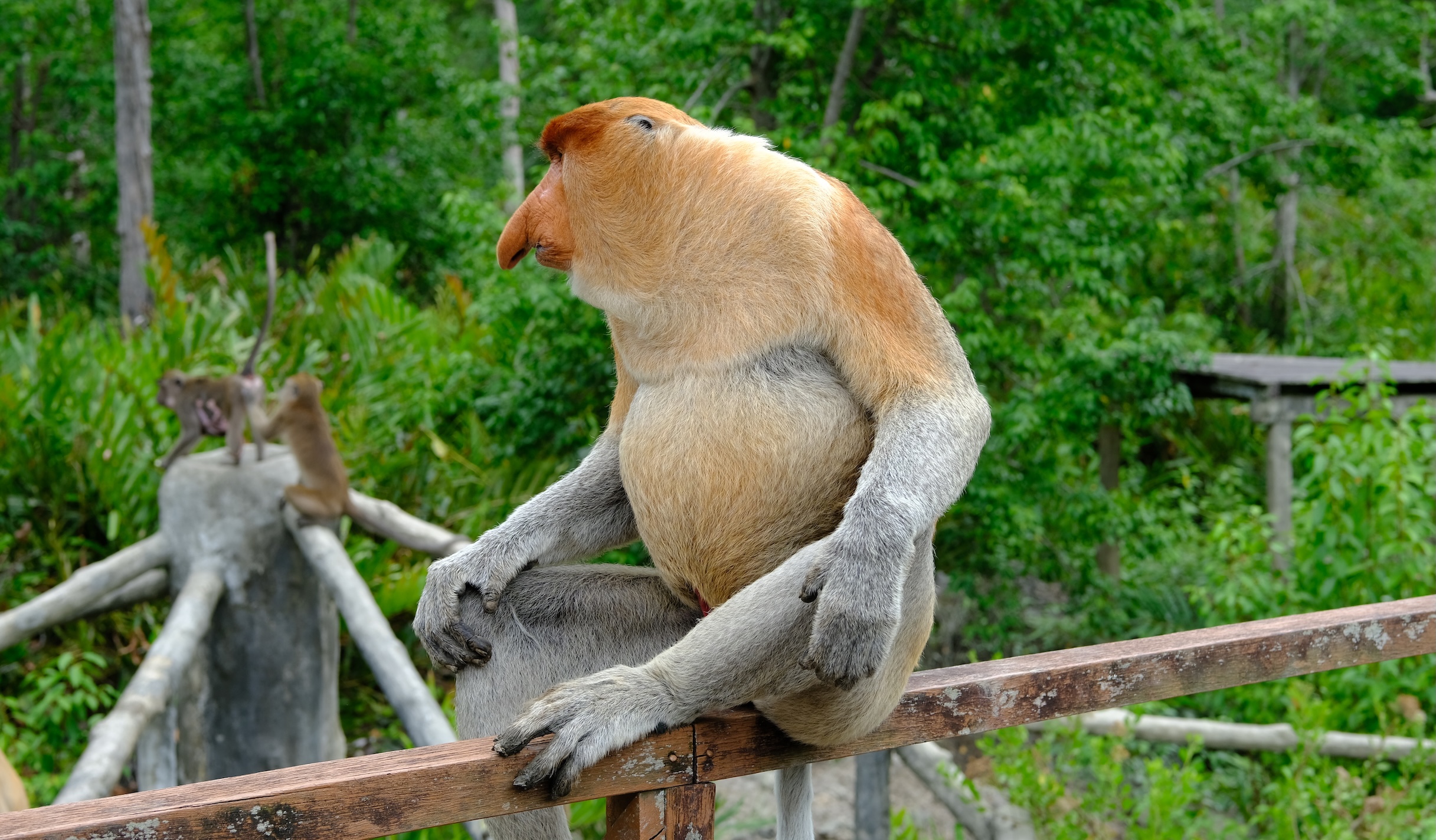
CONSERVATION CENTERS
Conservation centers
The town of Sandakan is the gateway to some of Borneo's most important conservation centers, where you can get up close to some creatures found only here.
Proboscis monkeys
Our journey began at the Proboscis Monkey Rehabilitation Center. These primates are unmistakable for their enormous pendulous nose, present only in males.
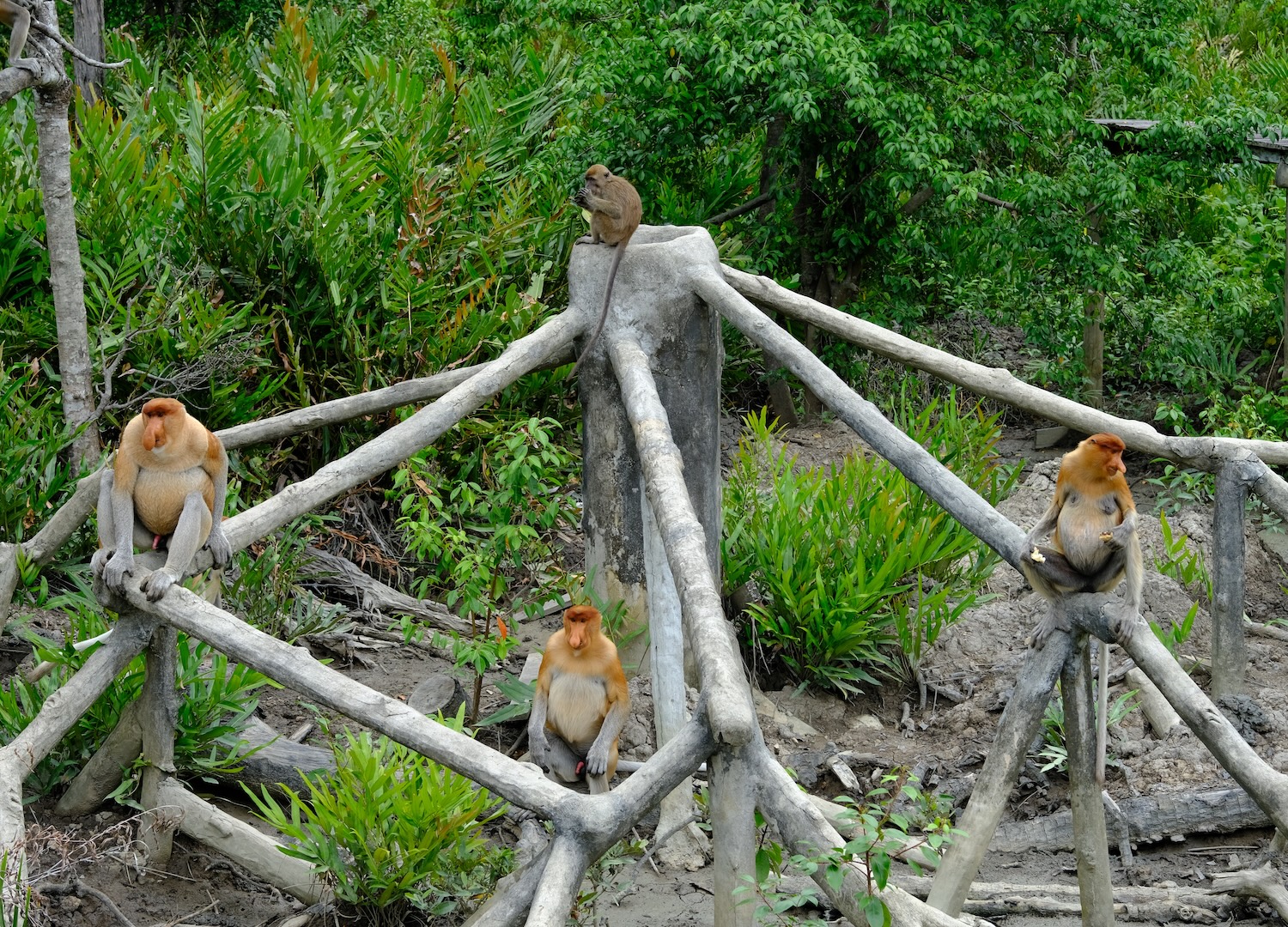
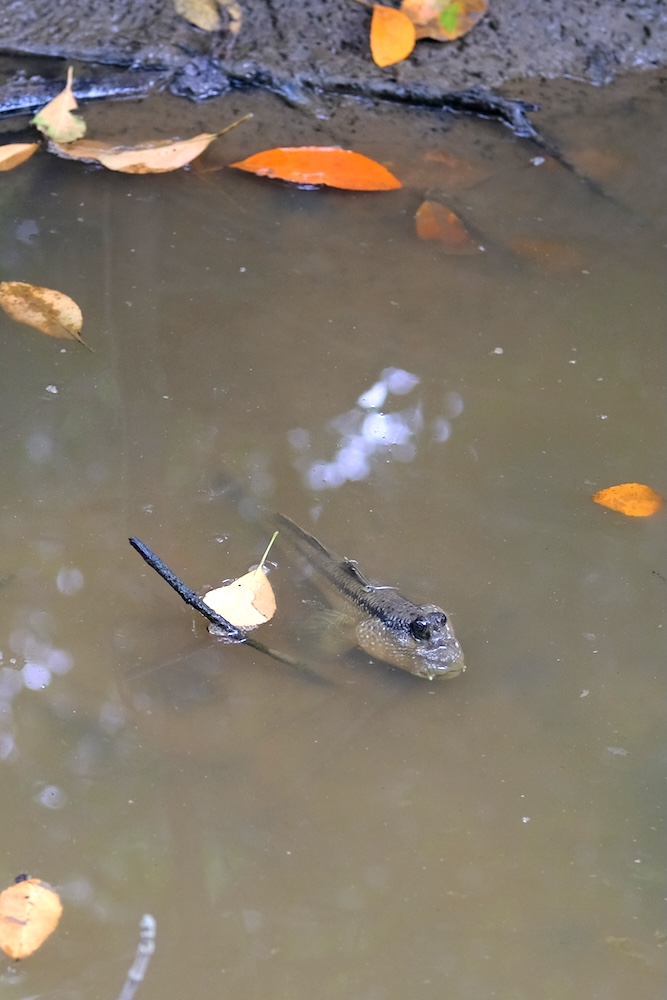
The guides explained to us that the nose has a function that is not yet entirely clear, but it is hypothesized that it serves to amplify calls during the mating period or to impress females. We were able to observe these animals up close as they engaged in climbing exercises and as they fed during the meal.

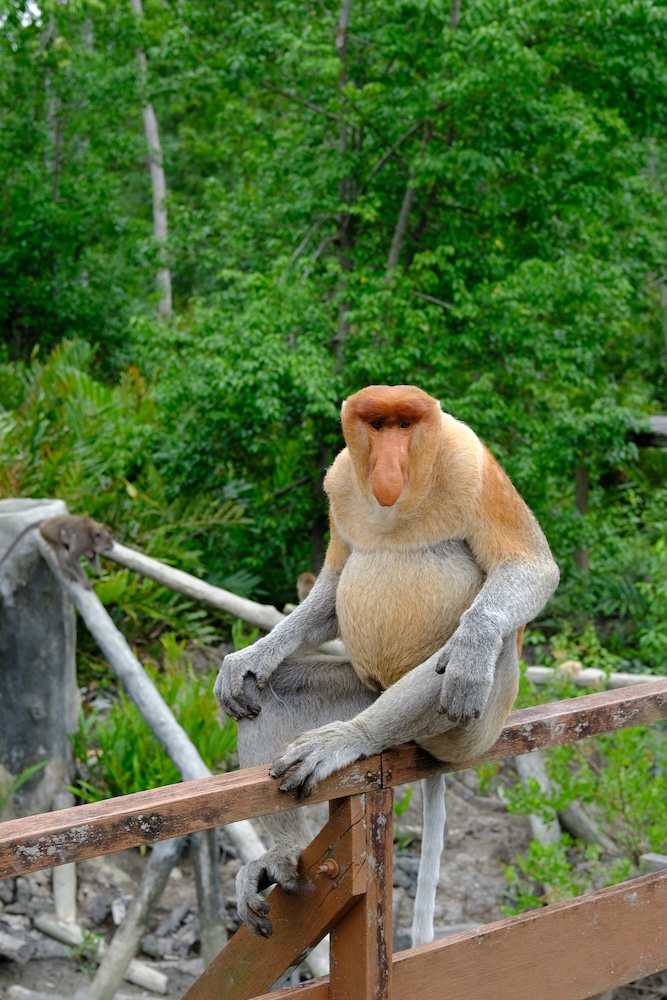
The groups were divided into families, headed by the alpha male, and single males. Obviously the singles were the ones who made the most noise, engaging in jumping competitions and agility tests.
Orangutans: the giants of the forest
Next, we headed to the orangutan rehabilitation center, a dense rainforest with very tall trees. These large primates, with long arms and thick reddish fur, are considered one of the most intelligent species on Earth. We observed them during their lunch, inside a large structure with darkened glass that blocks the view of visitors.
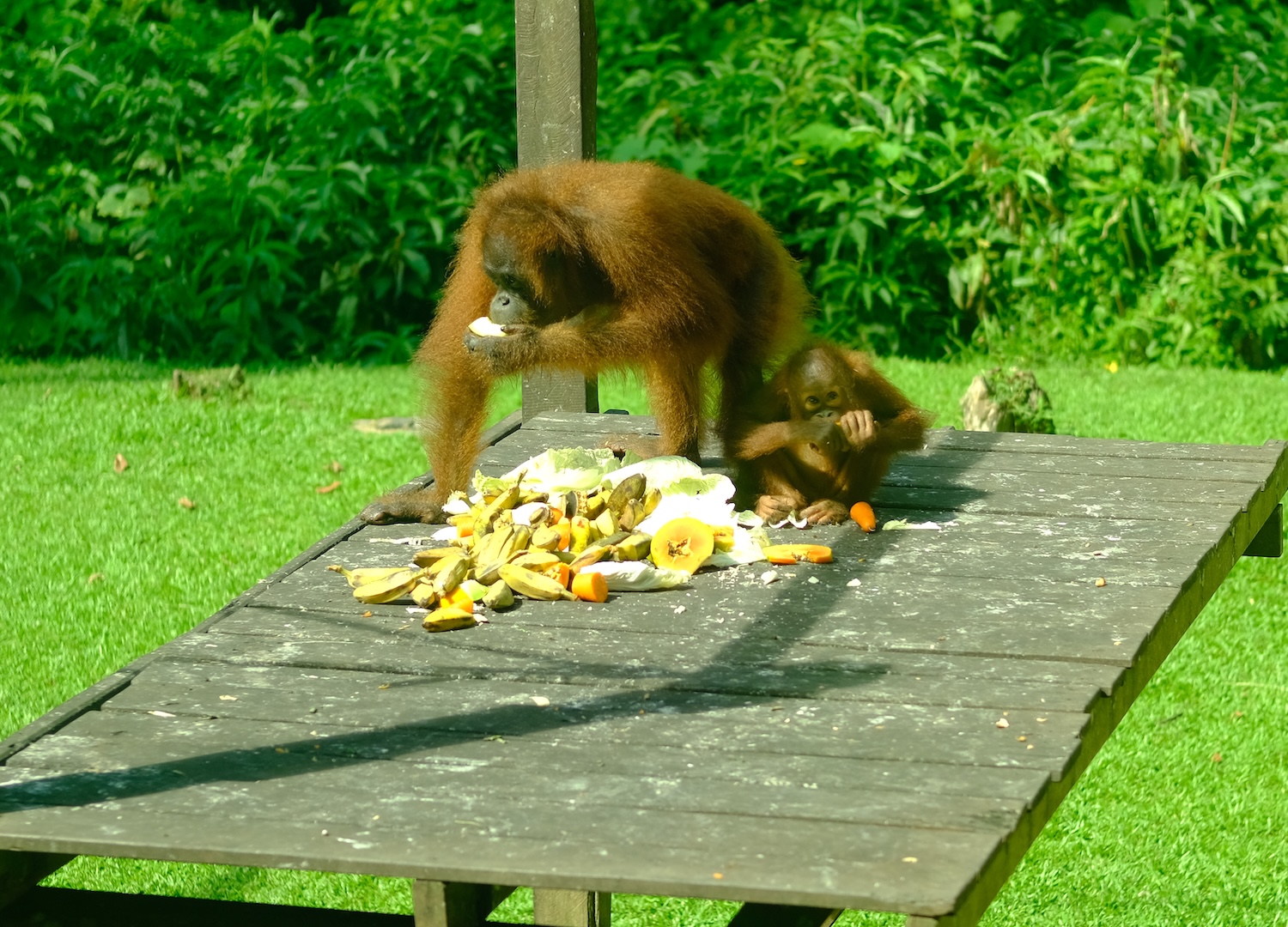
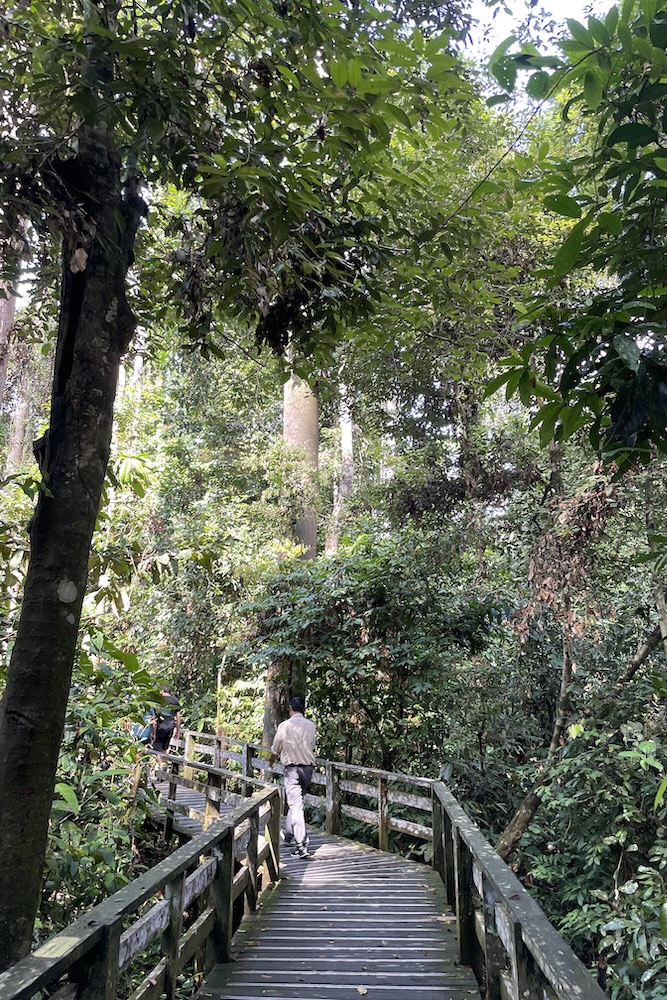
During the meal, the orangutans demonstrated a surprising ability to use trees, platforms, poles and ropes to reach the food, which was also attacked by some macaques. We learned that orangutans are frugivores, and that they spend much of their day in trees, building nests to sleep.
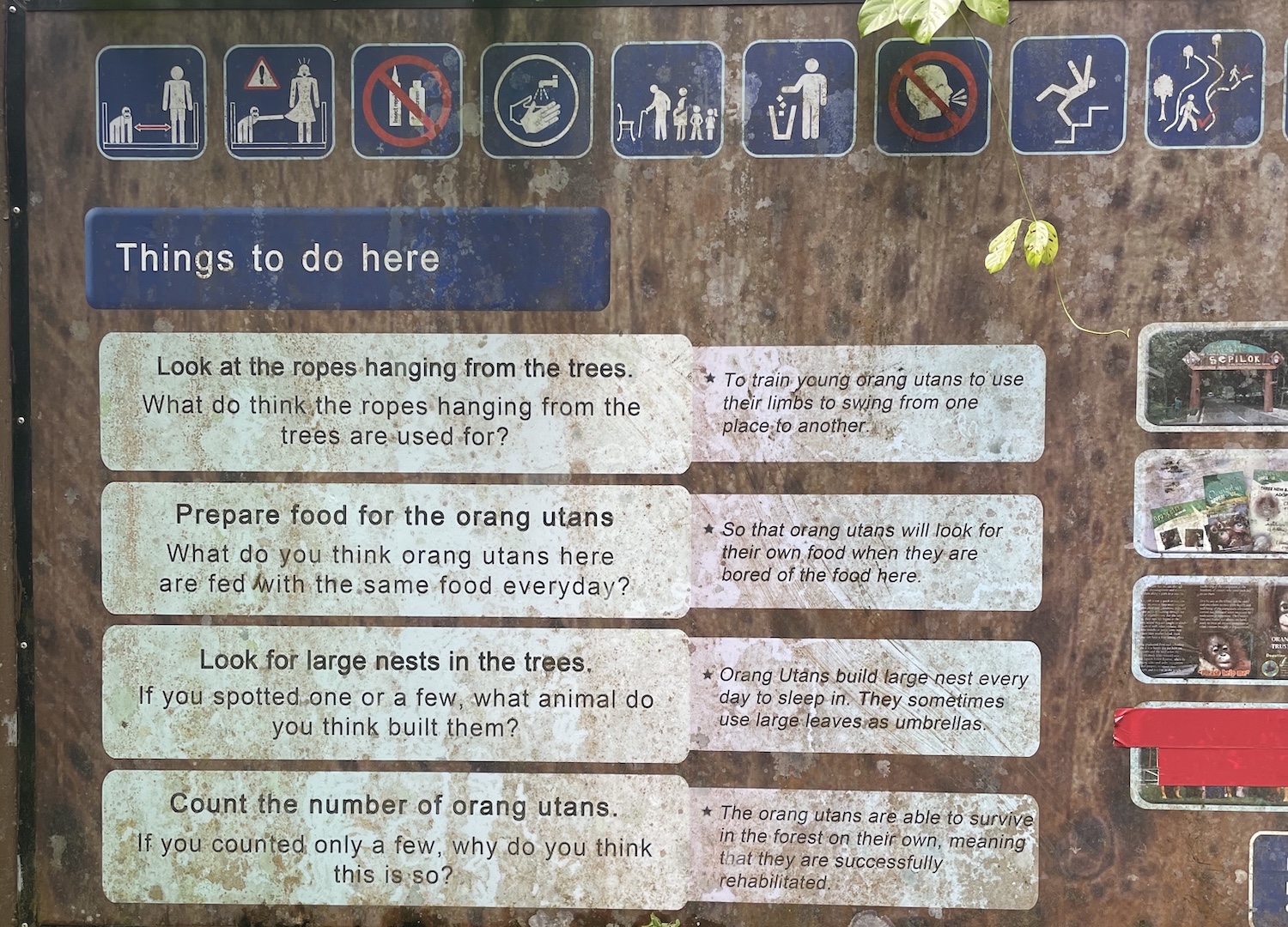
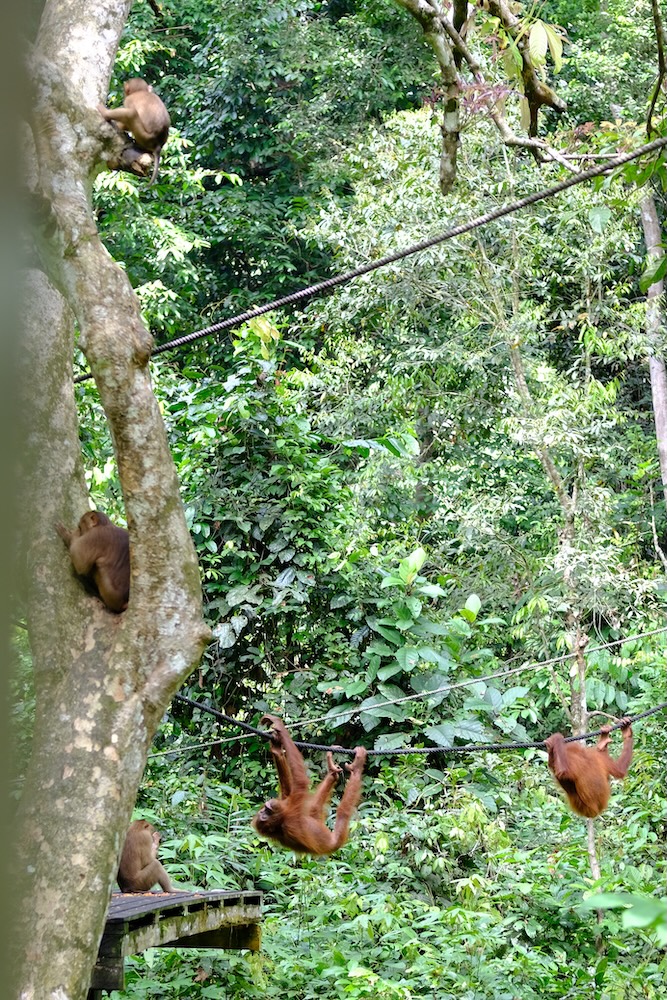
A note: orangutans are intelligent and curious animals. To avoid encouraging unwanted behavior, we invite you not to leave valuables unattended, especially outdoors. Always close your pockets and backpacks!
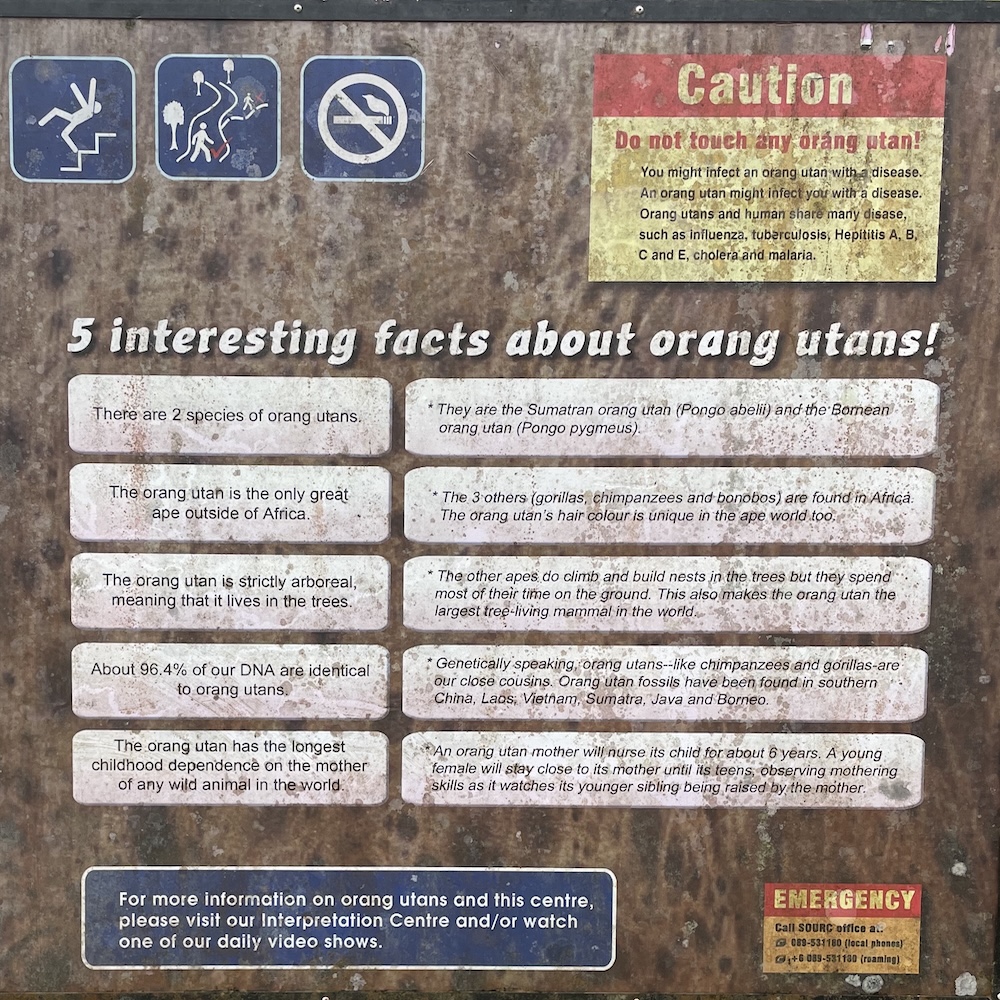
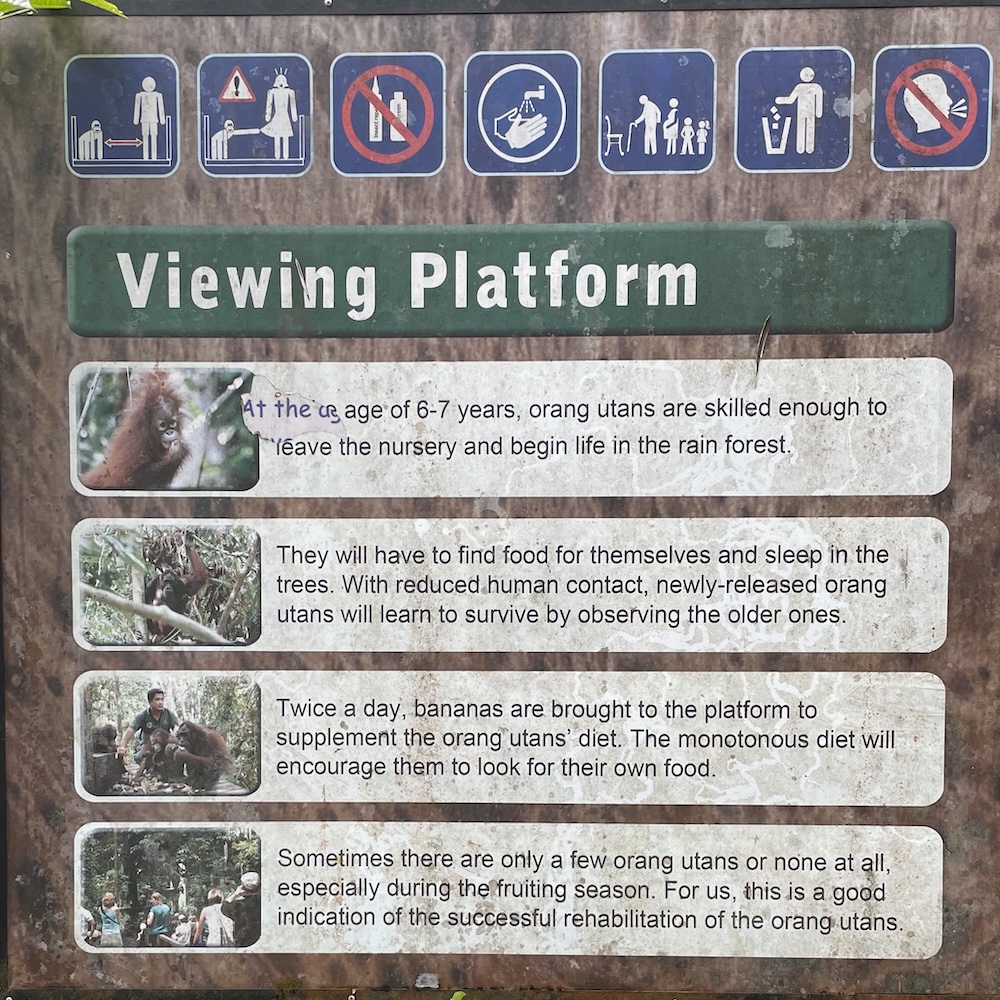
Sun bears: the smallest on the planet
The last stop of our trip was the sun bear conservation center. These little bears, the smallest of the species, are endemic to Southeast Asia.
They have a characteristic shiny black coat with a yellow spot on the chest, the shape of which varies for each specimen. Contrary to what you might think, sun bears are mainly herbivores and feed on fruit, insects and honey.
Unfortunately, due to poaching and habitat loss, these beautiful animals are at risk of extinction. Seeing them while they were busy munching on some carrots was truly a great emotion, and the most magical moment was certainly the one in which one of the small group turned towards us: his face was so expressive that for a moment it seemed as if he was smiling!
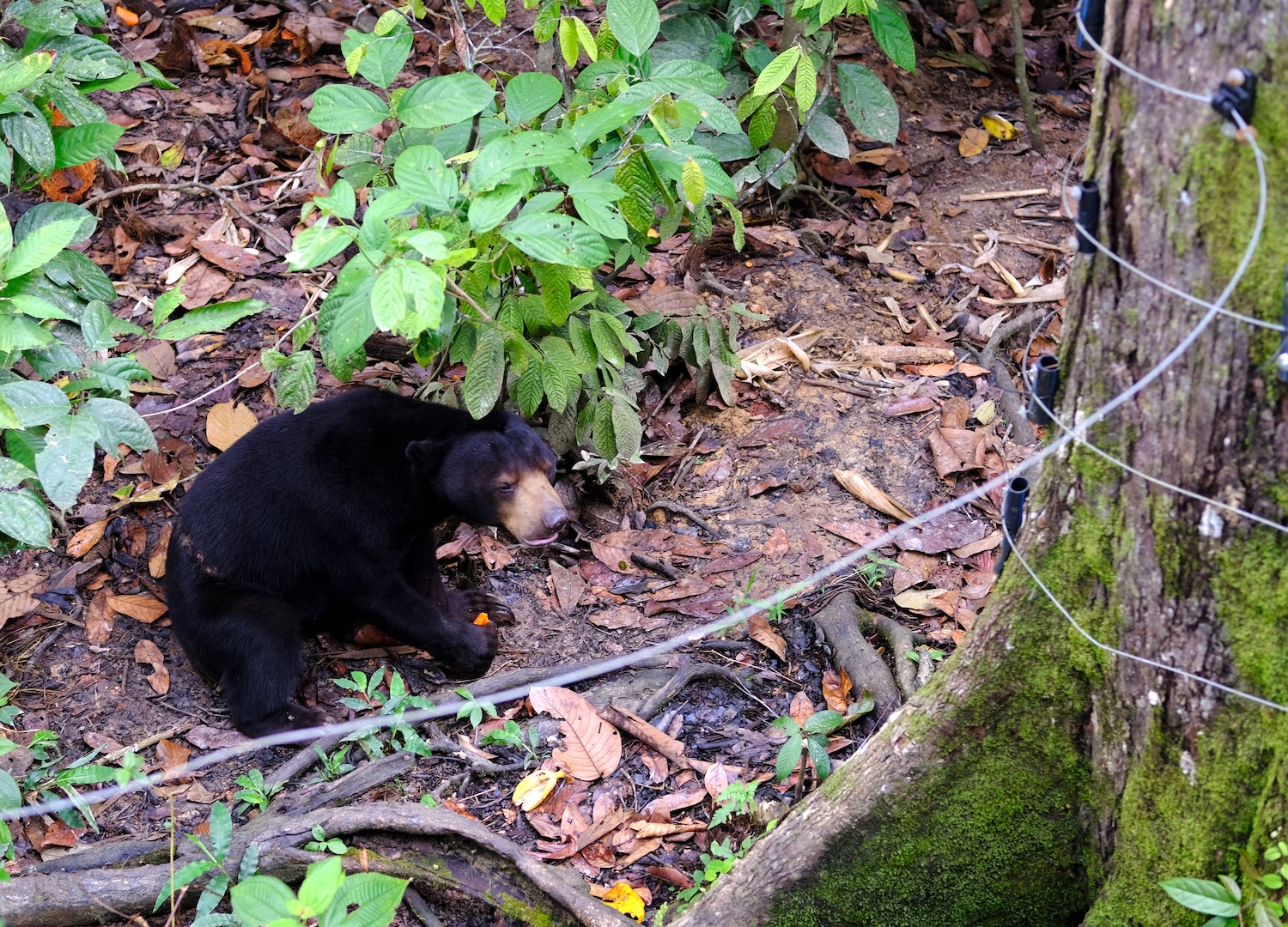
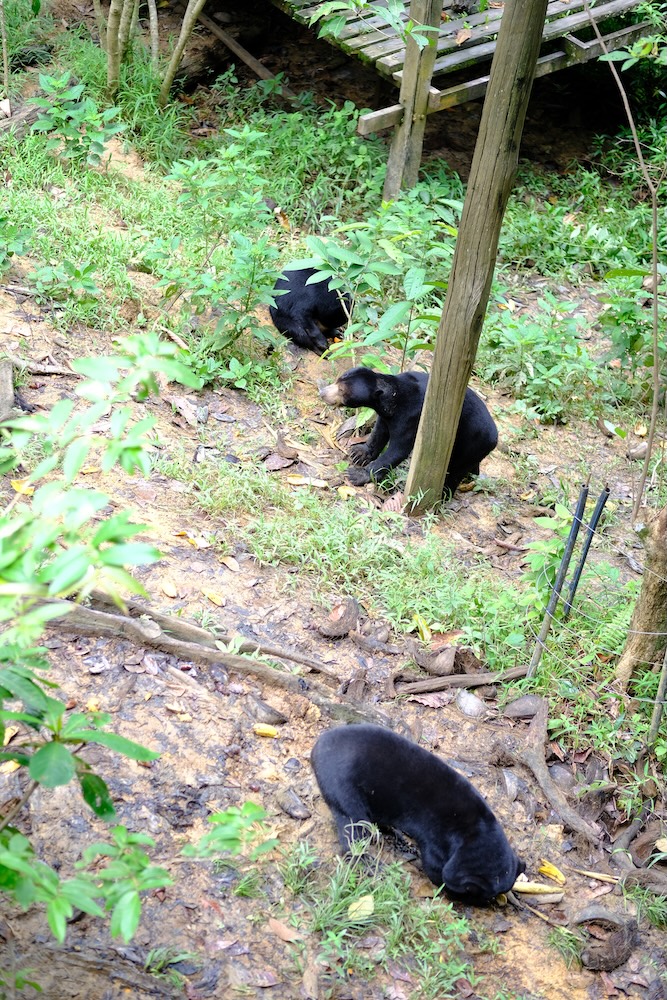
Visiting these conservation centers allows you to closely observe the extraordinary biodiversity of Borneo and learn about unique species, which enrich life on Earth, making our planet unique.
Follow us also in the next article, where we will take you to the rainforest bathed by the great Kinabatangan River.
That's all! If you like this text or have any question, leave a comment below.



Comments powered by CComment